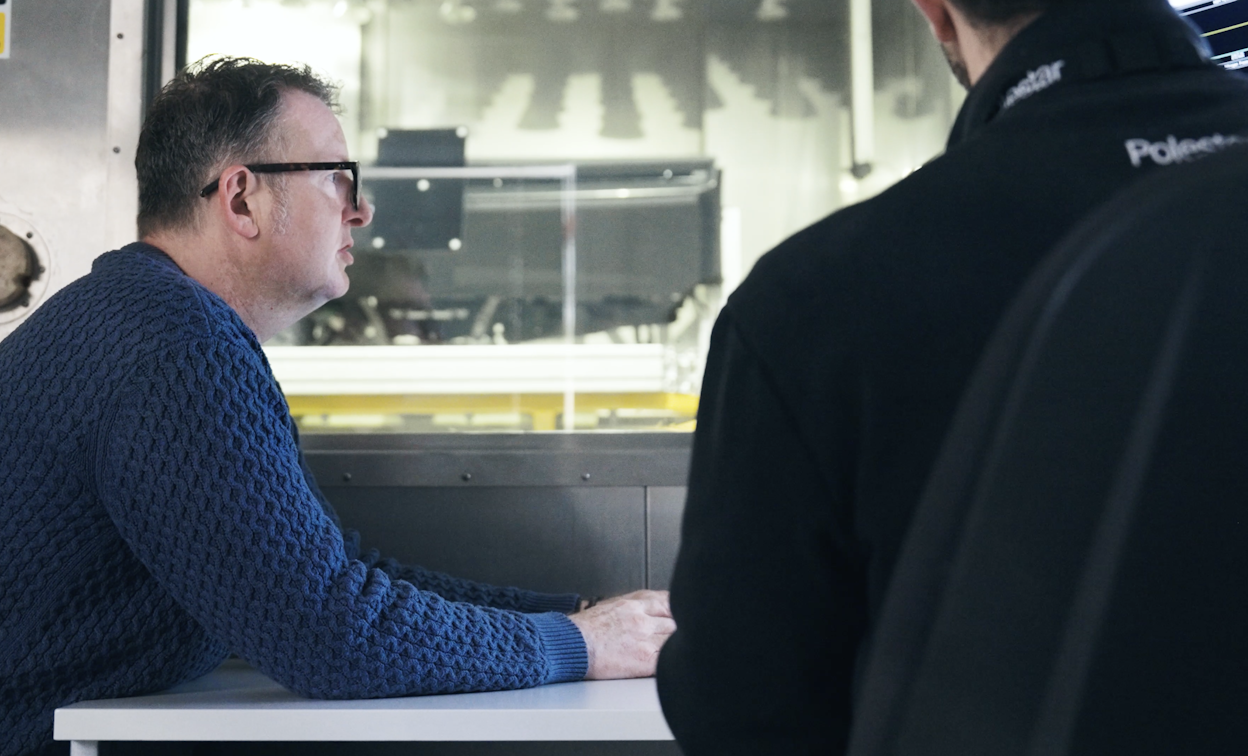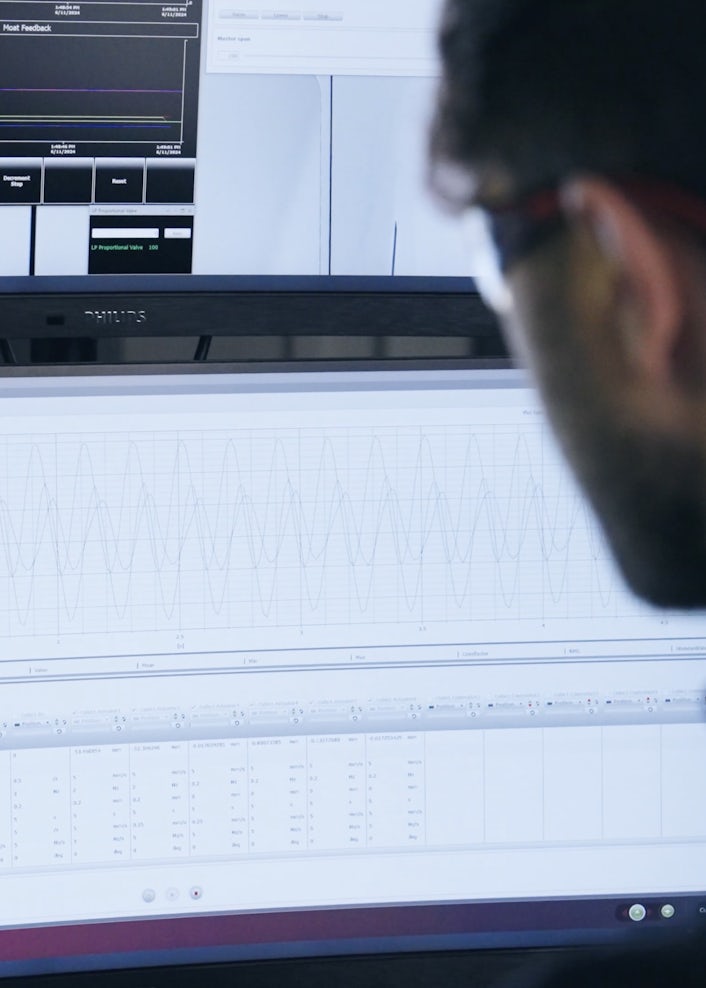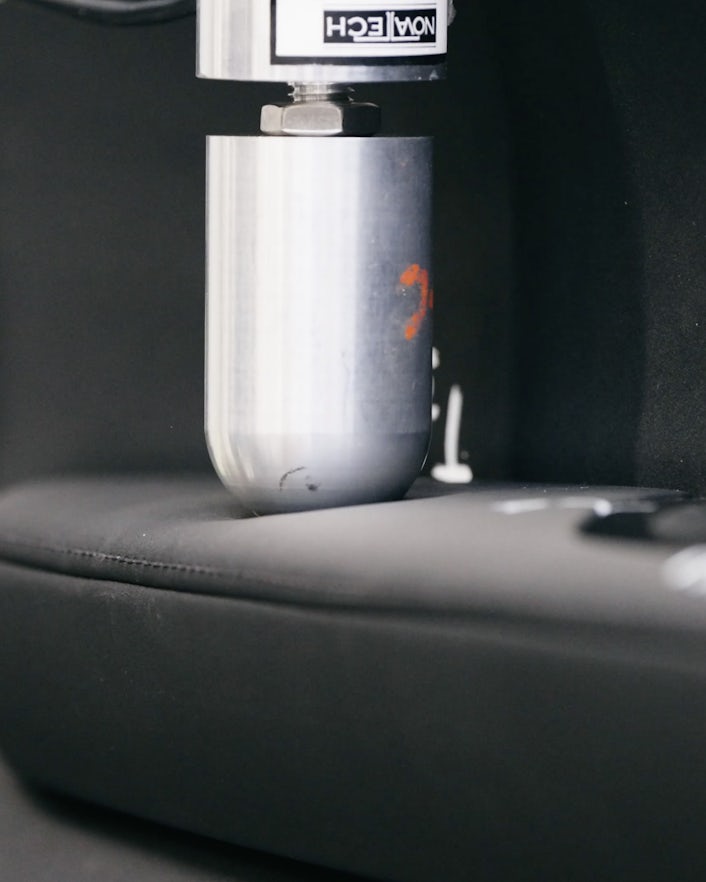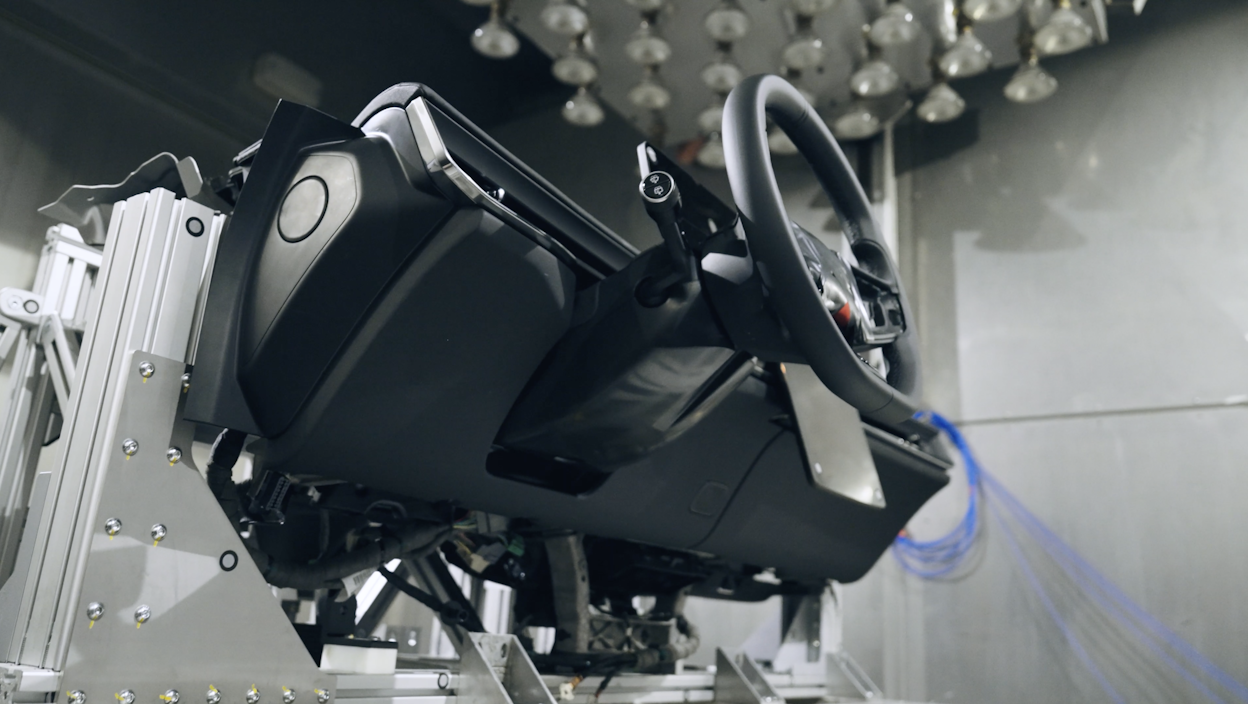From Concept to Car: Shake, rattle, and roll
There are things we take for granted in our cars. Things like knowing the doors will shut properly every time, the seat will slide flawlessly when needed, or the armrest hinges not crumbling after being slammed following a rough day at the office. This stuff may seem small, but in reality it's hugely important. This is where the likes of Julian Cantwell come in.
Cantwell is Polestar's Systems Validation Principal Engineer. Joining Polestar in December 2020, Cantwell's job is to make sure the parts in your car fit together properly and work as they should every time you need them. But before that, he has to see how quickly he can ruin them. "My job is basically to break as much stuff as possible," he says with an audible grin. "Obviously we have specifications that we need to adhere to, but we put them through their paces," Cantwell comments. Breaking things sounds fun, but it can cause some alarm if he's too ruthlessly efficient. "That can really upset the design engineers because that means they've got to go back to the drawing board to make sure things work."
Cantwell is of course quick to point out that his job is much more than just destruction. There’s a bigger purpose here. “Our end goal is really about durability and robustness. That’s essentially what we are trying to achieve. We are accelerating the wear and tear a customer might put our vehicle through and then we are going that bit farther to ensure that the product will meet and sometimes exceed expectations.”

How does one go about getting to do that for a job? A keen eye for detail and a brief. Polestar had asked Cantwell to look into breaking things (or making sure things didn't break easily, depending on how you look at it) and he needed a home to do it. This led him to Polestar's test facility located at MIRA in the UK. A haven of all things automotive testing, if you want to learn anything about a vehicle you take it there. It also happened to have the perfect space to create a lab to push material limits. Still, it wasn't perfect. "Basically, it was in a decommissioned state. I saw an opportunity here for Polestar to build something," says Cantwell, "We injected lots and lots of love, and a bit of cash, and revived it to get it to an acceptable standard for the work that we want to do."
When Cantwell says 'lots of love' went into it, he wasn't exaggerating. When he first got into his lab, there were leaks and the kit wasn't up to scratch. In general, things weren't quite ready to go. In the years since, and after some impressive elbow grease, Cantwell's built a team of eight people. "I've brought them along for the journey with me. I've brought them into this world, my crazy mind, and have been getting them up to speed with me. I think everyone calls me a mad scientist. I like to think outside the box and push the boundaries when it comes to testing, and building these crazy rigs is part of that process."


The Rigs
What exactly is a rig? Simply put, they are machines that do things people don't do - namely, open and close a hood hundreds of times a day. "Right now what's in the workshop is the a partially built vehicle with a full hood system on board - the hood, fenders, lights, bumpers, and all interior components,” explains Cantwell, "Basically we have a host of electric actuators inside the car, and a large servo electric actuator on the outside of the car. We are simulating customer usage of that bonnet in an accelerated time frame in the extremes of environment." Every step of popping the hood has been simulated - from pulling the lever inside to opening the front of the car up; it's all been replicated to understand the reliability and robustness of the system.
Cantwell's creations are intricate — and they have to be because they need to imitate one of the most awkward things in the world: Humans. "It's a really tricky thing to do because the human body can do incredibly complex moves easily, and when you try to create that in machinery, it becomes extremely difficult," adds Cantwell. The next time you reach into a cupboard for a bag of chips, or open a drawer to grab something, have a think about all the motions, stresses, and strains your body is going through — and then try and figure out how to replicate it using machines. Something as simple as holding a pen could be alarmingly complex when attempted artificially.
On top of putting mechanisms through physical strain, Cantwell and his team check to see how it would fare in less-than-perfect weather. "We take it down to minus 40 degrees centigrade, then up to 85 and back again. We'll test at 95 percent humidity. Basically, we put the whole system through its paces at all the extremes of temperature you're going to see across the world," he adds. Not content with repeating, freezing, cooking, and everything in between, the team will find grit, mud, dust from specific areas of the world, and nasty abrasive things you find in nature, and coat moving parts in them to see how well they'll fare in different regions as time goes on. It's an exercise in glorious, but necessary destruction.

Angry Partner Test
There's even a procedure called the 'Angry Partner Test.' Here, an imaginary wronged other half gives the door a good old slam over and over again. It may seem slightly overboard, but it shows the engineers plenty. "It can be quite an aggressive test. We are checking for structural, seal, harness, and glass issues. We are also monitoring for wear and tear on the locks, latches, and handles. We're measuring temperature, velocity, voltage, and current and monitoring any degradation that occurs. We also put ourselves in the customers shoes “How does it feel? What's the effort to pull the handles? What does it sound like when it operates?"
It's not just doors that the team tests, but components like suspension, bushes, mounting points, ball joints… you name it. Cantwell has found a way to push the car to its very limits long before it made it to your driveway, or even to a test driver. "The idea is we're doing this work now before the fully running vehicles are completed because we want to make sure we've found and changed anything unreliable, not robust or unsafe, before it goes anywhere near the track or the customer," adds Cantwell.
The team doesn't mess around with its rigs. If it's on a car, chances are they've found a way to break it — up to and including chassis links, which is quite some going — and then found a way to improve it. Without these processes, and experiments, Polestar's cars would be very different, but thankfully they're just as solid as you'd hope. Why? Because hidden in the UK is a team with a singular aim: to break and improve.








